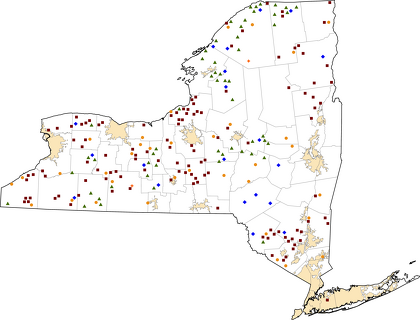New York
State Office of Rural Health
New York State Office of Rural Health (Charles D. Cook Office of Rural Health)
Phone: 518.402.0102
Email: orh@health.ny.gov
view details
New York Nonmetro Population
19,872,319
Estimated population
1,381,956
(7.0%)
People living in nonmetro areas
New York Rural Healthcare Facilities
20
Critical Access Hospitals
2
Rural Emergency Hospitals
55
Rural Health Clinics
120
Federally Qualified Health Centers*
35
Short Term/PPS Hospitals*
*Sites according to data.HRSA.gov (July 2025), showing only locations outside of
U.S. Census
Bureau Urban Areas with a population of 50,000 or more
Last Updated: 9/11/2025
Last Reviewed: 8/6/2024



Selected Social Determinants of Health for Rural New York